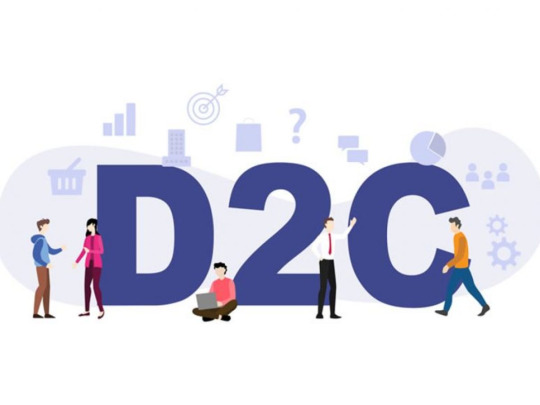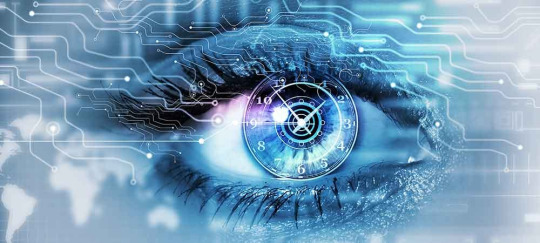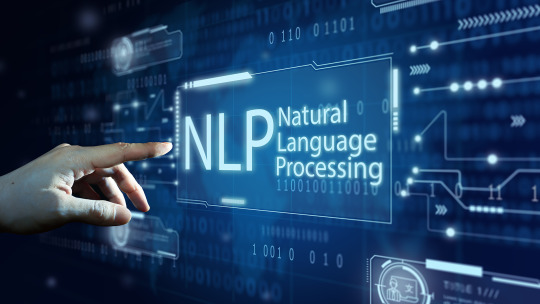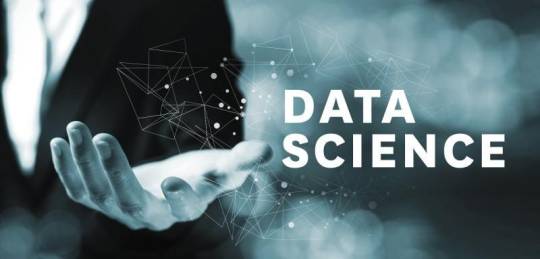Text
Ethics in AI: Addressing Challenges and Ensuring Responsible Technology Development

The Indian D2C market is booming, and AI plays a vital role in its growth. However, ethical considerations are crucial for D2C brands to build trust and ensure responsible use of this technology. Here's how Indian D2C brands can navigate the ethical landscape of AI:
Obstacles & Things to Think About:
Algorithmic fairness and bias: AI systems that are utilized for customer profiling, targeted advertising, or product recommendations have the potential to reinforce societal biases. Injustice towards specific groups may result from this, harming a company's reputation and losing the faith of its clients.
Data Security and Privacy: To personalize experiences, direct-to-consumer (D2C) marketers gather a lot of client data. It is crucial to provide strong data security procedures and acquire informed consent before collecting any data.
Transparency and Explainability: Brands must provide consumers with an explanation of how AI-powered technologies operate in order to earn their trust. Clear communication and user interfaces that explain the logic behind suggestions or choices can help achieve this.
Creating a Framework for Responsible AI:
Emphasis on Inclusion and Diversity: D2C companies should make sure that the AI development teams they work with are inclusive of a varied range of Indian consumers. By doing this, bias in algorithm design and data collection is lessened.
Put data privacy first by putting strong data protection measures in place, getting clear user consent, and being open and honest about how you use data. It would be essential to abide by laws like India's Personal Data Protection Bill.
Promote Explainable AI by creating user interfaces that elucidate the process by which AI generates suggestions. Customers are given more confidence to make wise decisions as a result.
Ethical Advertising & Marketing: Steer clear of deceptive AI-driven advertising strategies. Prioritize developing enduring relationships with customers and providing true customisation.
The human-in-the-loop method Throughout the AI development process, keep human supervision in place. Final choices on delicate issues should be made by humans, and AI should be used as a tool to support human decision-making rather than to replace it.
Rewards for D2C Brands from Responsibly Developed AI:

Improved Customer Experience: By personalizing interactions without sacrificing privacy, ethical AI builds loyalty and trust.
Better Brand Reputation: By showcasing ethical AI methods, a brand can attract consumers that value ethics and cultivate a favorable brand image.
Reduced dangers: Preventing prejudice and data privacy reduces the legal and reputational dangers that come with using AI unethically.
Indian D2C firms may properly use AI to create sustainable growth and cultivate strong customer relationships in this dynamic industry by giving ethical issues top priority.
0 notes
Text
Computer Vision: Transforming Image and Video Analysis with AI
Computer vision is a rapidly developing field of artificial intelligence (AI) that's revolutionizing the way we see and understand the world through images and videos. By harnessing the power of machine learning and deep learning algorithms, computer vision enables computers to interpret and analyze visual data, extract meaningful information, and even take actions based on their findings.

Here's a breakdown of what computer vision is and how it's transforming image and video analysis:
What is Computer Vision?
Imagine giving a computer the ability to see like a human. That's essentially what computer vision strives for. It equips computers with the capability to:
Interpret visual data: Analyze digital images and videos, including identifying objects, people, scenes, and activities.
Extract information: Derive meaningful insights from the visual data, such as object attributes, spatial relationships, and actions.
Make decisions: Based on the extracted information, computer vision systems can make recommendations or trigger actions.
How Does Computer Vision Work?
The core concept behind computer vision involves mimicking the human visual system. Here's a simplified breakdown of the process:
Image Acquisition: Capturing visual data through cameras or video feeds.
Preprocessing: Preparing the data for analysis, which may involve noise reduction, normalization, or format conversion.
Feature Extraction: Identifying and isolating key characteristics from the images, such as edges, shapes, textures, or colors.
Machine Learning/Deep Learning: Using algorithms trained on vast amounts of labeled data to recognize patterns, classify objects, and make sense of the visual information.
Transforming Image and Video Analysis
Computer vision has significantly transformed image and video analysis by:
Automation: Automating tasks that were previously manual, such as image classification, object detection, and content tagging. This saves time, improves efficiency, and reduces human error.
Accuracy: Deep learning algorithms can achieve high levels of accuracy in image and video analysis, surpassing human performance in specific tasks.
Scalability: Computer vision systems can handle massive amounts of visual data, making them ideal for large-scale applications like video surveillance or medical image analysis.
New Applications: Computer vision has opened doors to entirely new applications in various fields, including self-driving cars, robotics, medical diagnosis, and augmented reality.
Overall, computer vision is a powerful tool that's fundamentally changing how we interact with and understand the visual world. As the technology continues to evolve, we can expect even more innovative applications and advancements in image and video analysis in the years to come.
0 notes
Text
Natural Language Processing: Enhancing Communication with AI Systems
Natural language processing (NLP) is a branch of artificial intelligence (AI) that enables computers to comprehend, generate, and manipulate human language. Natural language processing has the ability to interrogate the data with natural language text or voice. This is also called “language in.” Most consumers have probably interacted with NLP without realizing it. For instance, NLP is the core technology behind virtual assistants, such as the Oracle Digital Assistant (ODA), Siri, Cortana, or Alexa. When we ask questions of these virtual assistants, NLP is what enables them to not only understand the user’s request, but to also respond in natural language. NLP applies both to written text and speech, and can be applied to all human languages. Other examples of tools powered by NLP include web search, email spam filtering, automatic translation of text or speech, document summarization, sentiment analysis, and grammar/spell checking. For example, some email programs can automatically suggest an appropriate reply to a message based on its content—these programs use NLP to read, analyze, and respond to your message.

Natural Language Processing: A Boon for D2C Brands in India's Booming Market
India's direct-to-consumer (D2C) sector is flourishing because to rising internet penetration and a tech-savvy populace. Nonetheless, as the competition gets fiercer, brands must figure out how to be unique. A potent way to improve customer experience and communication with AI technologies is through Natural Language Processing (NLP).
How Can NLP Assist D2C Brands and What Does It Mean?
AI systems are enabled by NLP to comprehend and react to human language. For D2C brands, this translates to a number of advantages:
Conversational AI: Natural Language Processing (NLP) powers chatbots and virtual assistants that can respond to consumer inquiries, suggest products, and manage simple transactions. For clients, this round-the-clock accessibility fosters ease and trust.
Hyper-Personalization: NLP is capable of examining user information such as past purchases and surfing patterns. This can then be utilized by AI to make product recommendations that are relevant, customize marketing messaging, and enhance the overall shopping experience.
Sentiment Analysis: NLP is capable of analyzing feedback, social media comments, and reviews from customers to determine their sentiment. This makes it possible for businesses to pinpoint areas in need of development, respond quickly to complaints, and forge closer bonds with their clientele.
Multilingual Support: Chatbots and virtual assistants that comprehend and react in a variety of Indian languages can be made using natural language processing (NLP). This expands the client base and serves the heterogeneous Indian market.
NLP Examples for Direct-to-Consumer Brands
Imagine a D2C apparel company utilizing a chatbot with NLP capabilities. Customers can use the chat feature to ask questions regarding size charts, receive personalized styling tips, and even check on the status of their orders. Long emails or phone conversations are no longer necessary, resulting in a smooth and effective communication.
NLP's Future in India for Direct-to-Consumer Brands
D2C brands who adopt this technology will be well-positioned for success in the Indian market as NLP is a constantly expanding field. We may anticipate even more creative ways to tailor the customer experience and foster greater brand loyalty as NLP develops and combines with other AI breakthroughs.
0 notes
Text
Deep Learning: Unleashing the Power of Neural Networks in AI

Deep learning has unlocked the true potential of AI by unleashing the power of neural networks. Its ability to learn from raw data, understand complex patterns, and make accurate predictions has led to breakthroughs in various fields, from computer vision and NLP to healthcare and autonomous systems. The study of deep learning, a branch of machine learning, has completely transformed artificial intelligence (AI). It is an effective method for teaching neural networks to find patterns in large datasets and forecast outcomes based on those analyses. Deep learning enables us to learn from data automatically, as contrast to traditional programming, which requires us to manually establish rules and logic.
The composition and operation of the human brain serve as an inspiration for neural networks. They are made up of artificial neurons, which are networked nodes that process information and gain experience. These artificial neurons are layered extensively in deep learning networks, which enables them to recognize intricate patterns in data.
Significant advancements in deep learning have been made in many different applications, such as:
Image recognition: With startling precision, deep learning algorithms are now able to recognize persons, objects, and even emotions in photographs. Improvements in medical diagnostics, surveillance systems, and self-driving automobiles have resulted from this.
Natural language processing (NLP): NLP is the study of how well computers comprehend and produce human language. Deep learning is largely responsible for these advances. Deep learning has made it possible for machines to comprehend and react to complicated queries, translate languages more correctly, and even produce writing that is realistic and of human caliber.
Speech recognition: Deep learning has transformed speech recognition, enabling very accurate computer comprehension of spoken language. As a result, voice assistants such as Alexa and Siri have been developed, and voice-based search and transcription services have been enhanced.
Although deep learning is still in its infancy, it is already a very potent tool. We anticipate seeing even more incredible developments in the years to come as we continue to create deep learning algorithms that are more complex and as we gather even more data.
0 notes
Text
The Power of Data: How Data Science is Transforming Industries

Data-Driven Decision Making
Businesses may now make well-informed decisions based on evidence and real-time insights thanks to data science. Businesses can find previously undiscovered trends, patterns, and correlations by studying massive databases. They may now make data-driven decisions that improve client experiences, boost operational efficiency, and streamline corporate procedures. Consider event services or party rentals as an example. Life is often marked by festivities, whether it’s a child’s birthday party with thrilling activities like inflatables and bounce houses leased from bouncy house rentals Gilroy businesses or a luxurious wedding event. Businesses in the sector can better tailor their services by gaining insights into client preferences and behaviors through the use of event data analysis.
Predictive Analytics
The capacity of data science to forecast future events is one of its main advantages. Businesses can forecast trends, customer behavior, demand patterns, and market dynamics by utilizing sophisticated predictive analytics approaches. This aids in their ability to foresee difficulties, grasp chances, and maintain an advantage over rivals. Industries including supply chain management, marketing, and finance can benefit greatly from predictive analytics. Predictive analytics, for example, is used by banks to find and target prospective loan consumers.
Healthcare and Precision Medicine
The field of data science in healthcare has enormous promise. Data scientists can find new medicines, generate tailored healthcare solutions, and spot trends in disease by studying patient data, medical records, and genomic information. Data science is transforming medication discovery, diagnosis accuracy, and healthcare delivery, ultimately leading to better patient outcomes and the advancement of precision medicine. This is the reason why the healthcare industry is using data science more and more.
Personalized Customer Experiences
Data science has completely changed how companies communicate with their clients. Businesses can learn about consumer preferences, purchase patterns, and mood by examining customer data. They are able to provide individualized experiences, focused marketing initiatives, and customized product suggestions as a result. Data science drives customer-centric strategies that promote satisfaction and loyalty in a variety of industries, including hospitality and e-commerce. Let’s use the hospitality sector as an example. Hotels are able to give each guest individualized services, such as bespoke room amenities and exclusive deals and discounts, by analyzing customer data.
Enhanced Operational Efficiency
When it comes to business operations optimization, data science is essential. Businesses are able to find areas for improvement, inefficiencies, and bottlenecks by evaluating operational data. Predictive maintenance, resource allocation, and process optimization are made possible by data-driven insights. Data science is being used by the manufacturing, logistics, and healthcare sectors to increase efficiency, save costs, and boost production.
There is no denying data science’s ability to revolutionize entire sectors. Data science is transforming how businesses function and generate value. It does this by facilitating data-driven decision-making and predictive analytics, as well as by promoting tailored customer experiences and increasing operational efficiency. In an increasingly data-centric world, embracing data science and its potential may open doors, spur innovation, and help organizations succeed. The potential for change is immense as long as industries keep utilizing data to their fullest potential. This bodes well for a time when decision-making will be guided by data-driven insights, completely changing the way we work and live.
1 note
·
View note